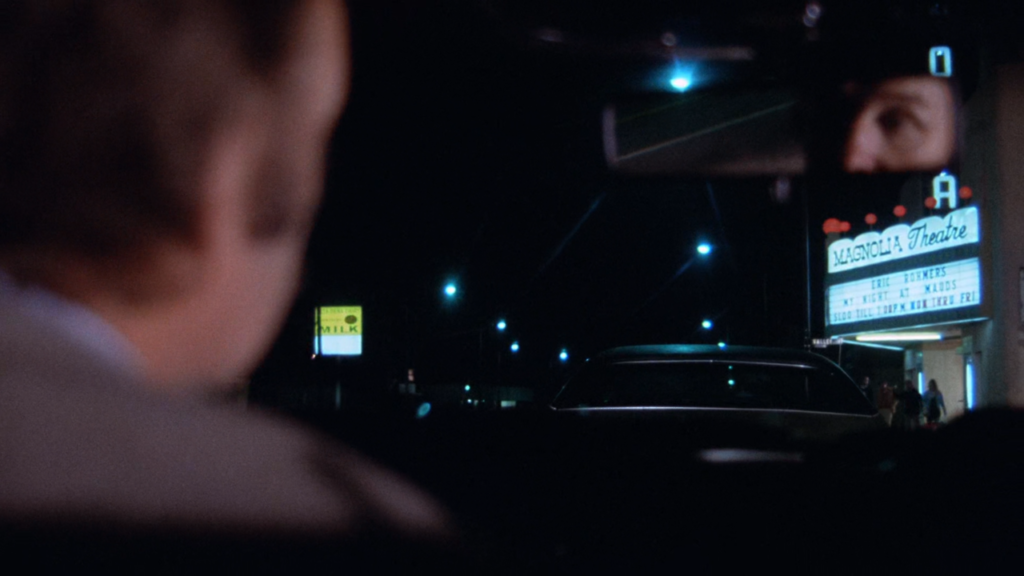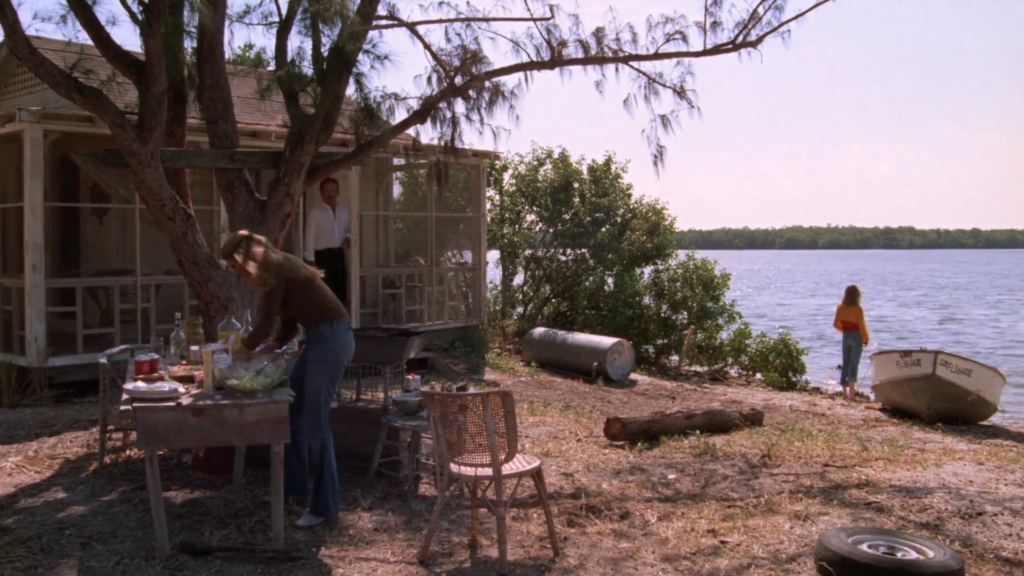|Chris Polley|

Night Moves screens at the Trylon Cinema as part of the Florida Noir series from August 13 to 17. For more information and tickets, please visit the Trylon’s website at trylon.org.
“How I hate these goddamn machines,” a disembodied voice speaks from the answering machine on the desk of private eye Harry Moseby, played effortlessly by Gene Hackman— an American icon whose name I regularly Google to make sure he’s still alive. This is the opening scene of Arthur Penn’s 1975 New Hollywood noir Night Moves, and while the inciting incident is introduced as Moseby scribbles the info about a missing daughter of a wealthy Hollywood widow, it’s also a clue about what’s on the mind of novelist and screenwriter Alan Sharp besides crimes and investigations: the misery of getting old, out of touch, and ornery.
Sharp wrote Night Moves as he approached 40, and Moseby tells various characters throughout the film that he is 40; both Hackman and Penn were well over 40 and 50, respectively, during filming. Really, none of the male characters in the film are spring chickens. Even James Woods in a supporting role in his late 20s looks already hardened by a life of hard labor, unresolved anger, and/or his future politics. And nearly every single one of them has disgusting lust in their eyes when in the presence of the aforementioned missing daughter—a flirtatious and lost 16-year-old named Delly, played by Melanie Griffith in her feature debut. Well, all of them except Moseby, who’s just dead set on just returning her to her mother Arlene per his assignment. And while our protagonist seems to have more scruples than most of the others on screen, he’s really just as lost as Delly.
Moseby doesn’t seem to have a passion for much of anything except talking about chess or his first job from several years ago. A retired Oakland Raider that spends more time staking out adulterers than loving his wife Ellen (Susan Clark), it’s likely as much a mystery to him as it is to us why he fills his days the way he does. He doesn’t want to go to the movies, he doesn’t like the name of his own P.I. business, and he doesn’t even want to watch the game on the bigger TV in his house, settling instead for a tiny black-and-white set in the upstairs den. Moseby doesn’t seem to be very interested in living life well, and life doesn’t seem very interested in treating Harry Moseby well either. When he and Ellen (whom Jonathan Murray aptly described as “femme fatalistic rather than fatale” in Cineaste[1]) get into a row in their dimly lit L.A. kitchen, Harry tells his wife he can’t stay and work it out— he has to go to Florida to find Delly. “So you can pretend you’re solving something?” Ellen retorts in a huff.
While Orpheus descended to the underworld with determination to bring Eurydice back to life, Moseby flies to the Sunshine State with an apathetic stare and a blank check from his temporary employer. Here he meets the carefree but quietly damaged Paula (a magnetic Jennifer Warren), who is clearly harboring at least one important secret, but since the missing girl is so easily found, Moseby doesn’t really see a reason to dig any deeper. What he does see, however, is an avenue for human connection—something he had clearly thought closed off to him for good once his marriage stalled.

And that’s really where the title of the film comes in: It’s a curious name, especially since the majority of the story takes place in the breezy bright daytime. But when Paula asks Harry late in the evening about an old famous game of chess he’s replaying on his travel board, the pun and significance of the moniker becomes clear. “Three little knight moves” are what this great chess player of the 1920s didn’t see coming, and if he had, he could have circumvented the checkmate. No one can ever really see what’s coming; we’re all just making moves in the dark, just like a clueless gumshoe in the throes of a midlife crisis in a great noir.
And also like any great noir, even when the initial crime is solved, nothing much else is. Penn’s direction and Sharp’s script (Ebert called the latter at once “literal and elliptical”[2]) do quick work to both streamline and obfuscate the mysteries and revelations at various points in the film. In one of the film’s most affecting shots, this metaphor becomes quite literal, and Moseby arrives at one conclusion only to find himself ultimately driving around in agonizing circles. Instead, Night Moves feels more like when one hits another mile marker on the way to the grave and wonders if neither the journey nor the destination are all that fulfilling.
And we all know what sweltering place besides Florida is full of sin, torture, and multiple circles.
NOTES
[1] Jonathan Murray, “Night Moves,” Cineaste Magazine, winter 2017, https://www.cineaste.com/winter2017/night-moves.
[2] Roger Ebert, “Great seventies film noir,” RogerEbert.com, March 26, 2006, https://www.rogerebert.com/reviews/great-movie-night-moves-1975.
Edited by Michelle Baroody
